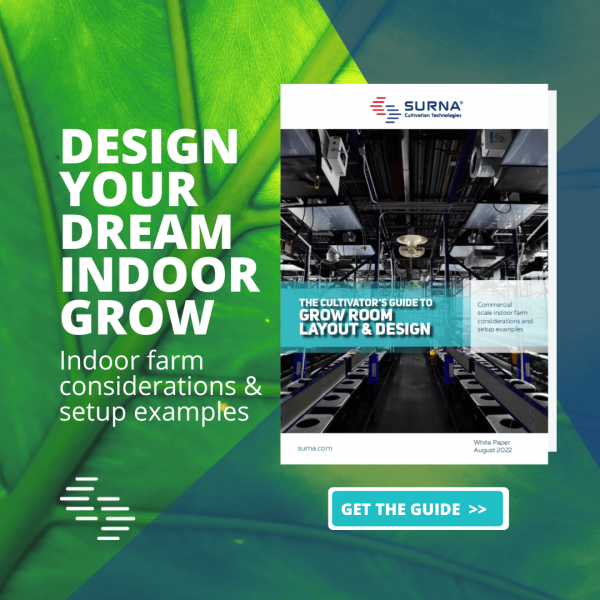In a commercial cultivation facility, the ultimate goal is to produce the most of the best quality crop possible for the lowest cost. There are numerous elements that factor into each part of this goal and when trying to improve yield or reduce costs, it can be necessary to take a second look at every element of the facility. Including the growing medium.
If your commercial facility is still growing in soil, it’s time to consider switching to hydroponics. This should only be considered if your master grower is experienced enough to handle the intense demands of hydroponic cultivation. Using hydroponics can result in huge success when done correctly, but can also lead to huge risks when done unsuccessfully.
Soil growing, while great for beginners, offers a number of drawbacks for commercial facilities.
- Soil can’t (shouldn’t) be reused and must be disposed of after each harvest. Once used, soil becomes contaminated with all the nutrients and other by-products of cultivation and should not be reused, especially if the prior crop experienced any sort of microbial infection such as powdery mildew. It’s better not to risk contaminating the next crop and instead start with fresh soil. This results in added costs for disposing of the large amounts of soil used for each growing cycle.
- Smaller yields are typical with soil growing.
- Soil introduces soil-borne pests into the cultivation environment. Depending on where the soil comes from, the number of living organisms in soil can range dramatically. Some estimates put it at 10,000-50,000 individual species in a gram of soil with some being as high as 189,000. The high number of organisms in soil can lead to biosecurity problems is not properly taken care of.
- Soil must be purchased and transported to the facility in advance.This results in huge monthly bills for both the price of the soil and for transporting it to the facility. And if the wrong amount is on-hand come planting time, you may not be able to plant the entire crop in time.
- Soil is messy. As any home gardener knows, when using soil to grow crops, dirt gets everywhere during the process. Every time plants are moved, re-potted or watered, there is a good chance dirt will end up in a number of undesired places.
- Growing in soil requires more water and nutrients than hydroponic cultivation. Some of the water and nutrients will go into the soil rather than being absorbed by the plants. This increases costs and makes your facility less efficient.
However, soil does have some benefits. Growing in soil is more forgiving of mistakes such as incorrect nutrient dosing – a mistake that can quickly kill an entire crop when growing with hydroponics. This makes soil the ideal medium for less experienced growers.
However, once the move to commercial cultivation has been made, it is time to strongly consider using hydroponics. The benefits of growing hydroponically include:
- Hydroponics results in faster growth rates and higher yields. Hydroponic nutrients are typically derived from very pure mineral salts and exclude organic inputs. These minerals can easily be absorbed by plants without any additional breakdown, allowing plants to easily uptake what they need with very little effort. This accelerated metabolization results in faster growth rates and larger overall plants. Larger plants equal higher yields.
- Hydroponics reduced water and nutrient usage. With hydroponics, water and nutrients are delivered directly to the plant, without a middleman, plants are able to absorb more of the nutrients that have been delivered, without losing some to the soil. Additionally, growing hydroponically can use up to 90% less water than growing in soil.
- Hydroponics requires less maintenance and labor to maintain. Hydroponic systems are designed to manage daily irrigation and can also be set up to measure runoff and standardize watering schedules, resulting in less daily labor. At the end of a cycle, hydroponic systems can be drained and reused without extensive cleaning.
- Growing with hydroponics results in less waste. Water can safely be reclaimed, filtered, sterilized and reused, soil cannot.
- Hydroponic growing reduces the number of contaminants that are brought into a facility. Hydroponics removes the need for soil, thus removing a possible source of biological contamination.
- Hydroponics allows for more control over factors such as pH, nutrient levels and more. Every aspect (nutrient levels, aeration, dissolved oxygen, irrigation cycle, temperature and pH) of a hydroponic irrigation system can be tailored and controlled to ensure perfect levels for your crop. Adjustments can be made as needed to each individual variable without any detriment to the crop.
All of this adds up to huge cost savings and increased yield, both of which should be the goal of any commercial facility.
Special thanks to our friends at Current Culture for providing information for this post.

